-
 bitcoin
bitcoin $118548.520763 USD
3.67% -
 ethereum
ethereum $4352.564943 USD
4.79% -
 xrp
xrp $2.964058 USD
4.22% -
 tether
tether $1.000565 USD
0.05% -
 bnb
bnb $1028.372955 USD
1.46% -
 solana
solana $221.373507 USD
6.00% -
 usd-coin
usd-coin $0.999933 USD
0.02% -
 dogecoin
dogecoin $0.248633 USD
6.85% -
 tron
tron $0.341444 USD
2.38% -
 cardano
cardano $0.852946 USD
5.82% -
 hyperliquid
hyperliquid $47.869306 USD
6.15% -
 chainlink
chainlink $22.561476 USD
6.01% -
 ethena-usde
ethena-usde $1.001258 USD
0.05% -
 avalanche
avalanche $30.660000 USD
2.06% -
 stellar
stellar $0.400917 USD
9.76%
DeFi income is not as expected: What are the key points of strategy optimization?
Optimize your DeFi strategy by identifying underperforming assets, diversifying your portfolio, and using DeFi aggregators to maximize returns.
May 08, 2025 at 05:14 am
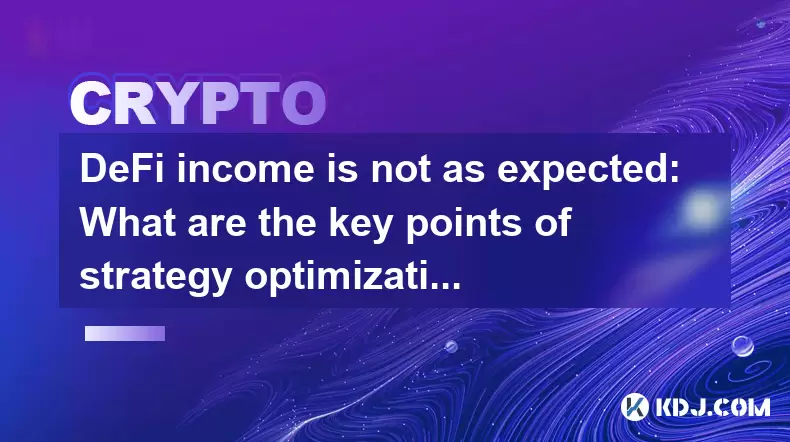
DeFi income is not as expected: What are the key points of strategy optimization?
In the world of decentralized finance (DeFi), many users dive into various platforms with the hope of generating substantial returns. However, the reality often falls short of expectations. If you find that your DeFi income is not as expected, it's crucial to optimize your strategy. This article will explore the key points of strategy optimization to help you enhance your DeFi earnings.
Understanding the Basics of DeFi Income
Before delving into optimization strategies, it's essential to have a clear understanding of how income is generated in DeFi. DeFi platforms offer various ways to earn income, including lending, yield farming, staking, and liquidity provision. Each method comes with its own set of risks and rewards, and understanding these dynamics is crucial for optimizing your returns.
Lending in DeFi involves depositing your cryptocurrency into lending protocols like Aave or Compound, where you earn interest over time. Yield farming, on the other hand, involves providing liquidity to decentralized exchanges (DEXs) like Uniswap or SushiSwap, where you earn transaction fees and sometimes additional tokens as rewards. Staking involves locking up your tokens to support the operations of a blockchain network, earning you staking rewards. Lastly, providing liquidity to pools can generate income through trading fees and liquidity mining rewards.
Identifying Underperforming Assets
One of the first steps in optimizing your DeFi strategy is to identify underperforming assets. This involves analyzing the returns you are getting from different platforms and assets. Use tools like DeFi Pulse or Zapper to track your investments and see which ones are not meeting your expectations.
Once you've identified underperforming assets, consider whether they are still worth holding. Sometimes, holding onto an asset in hopes of a future price increase can lead to missed opportunities elsewhere. It's important to be willing to reallocate your funds to more promising opportunities.
Diversifying Your DeFi Portfolio
Diversification is a fundamental principle of investment strategy, and it applies equally to DeFi. Diversifying your DeFi portfolio can help mitigate risks and potentially increase your overall returns. Instead of putting all your funds into one platform or asset, spread your investments across different DeFi protocols and types of income-generating activities.
For instance, you might allocate a portion of your funds to lending on Aave, another portion to yield farming on Uniswap, and yet another to staking on Ethereum 2.0. This approach can help you capture different types of returns and reduce the impact of any single underperforming investment.
Optimizing Yield Farming Strategies
Yield farming is one of the most popular ways to earn income in DeFi, but it can also be one of the most complex. Optimizing your yield farming strategies involves several key considerations.
Choosing the Right Pools: Not all liquidity pools are created equal. Some offer higher rewards but come with higher risks. Research the pools you are considering and assess their risk-reward profile. Look for pools with a good balance of rewards and liquidity.
Impermanent Loss Management: Impermanent loss is a risk associated with providing liquidity to pools. To mitigate this, consider pools with stablecoins or assets that you believe will maintain their value relative to each other. Additionally, some platforms offer insurance against impermanent loss, which can be a valuable tool.
Staking Additional Tokens: Many yield farming platforms offer additional tokens as rewards. Staking these tokens can provide extra income. Be sure to understand the staking mechanics and potential returns before committing your rewards to staking.
Leveraging DeFi Aggregators
DeFi aggregators like Yearn Finance or Harvest Finance can be powerful tools for optimizing your DeFi income. These platforms automatically allocate your funds across various DeFi protocols to maximize returns. They often use sophisticated algorithms to find the best yield opportunities, saving you the time and effort of manually managing your investments.
To use a DeFi aggregator, follow these steps:
Choose an Aggregator: Research and select a DeFi aggregator that aligns with your investment goals. Popular options include Yearn Finance, Harvest Finance, and Beefy Finance.
Connect Your Wallet: Navigate to the aggregator's website and connect your cryptocurrency wallet, such as MetaMask. Ensure you have the necessary funds in your wallet to participate in the aggregator's pools.
Select a Strategy: Most aggregators offer multiple strategies or vaults. Choose one that matches your risk tolerance and return expectations. Each strategy will have different underlying assets and yield sources.
Deposit Funds: Once you've selected a strategy, deposit your funds into the aggregator. The platform will automatically manage your funds to maximize returns.
Monitor and Adjust: Regularly check the performance of your investments through the aggregator's dashboard. Be prepared to adjust your strategy if market conditions change or if better opportunities arise.
Managing Risks in DeFi
Risk management is crucial in any investment strategy, and DeFi is no exception. Managing risks in DeFi involves several key practices.
Security: Always prioritize the security of your investments. Use reputable platforms and enable two-factor authentication (2FA) on your wallets. Be cautious of phishing attempts and never share your private keys.
Impermanent Loss: As mentioned earlier, impermanent loss is a significant risk in yield farming. Consider using strategies that minimize this risk, such as providing liquidity to stablecoin pools or using platforms that offer insurance against impermanent loss.
Smart Contract Risk: DeFi platforms rely on smart contracts, which can have vulnerabilities. Research the platforms you use and consider using those with audited smart contracts. Diversifying across multiple platforms can also help mitigate this risk.
Market Volatility: Cryptocurrency markets are highly volatile. Be prepared for price fluctuations and consider setting stop-loss orders or other risk management tools to protect your investments.
Reassessing Your DeFi Strategy Regularly
The DeFi landscape is constantly evolving, with new platforms and opportunities emerging regularly. Reassessing your DeFi strategy on a regular basis is essential to ensure that you are maximizing your returns and staying ahead of market trends.
Set a schedule to review your investments, such as monthly or quarterly. During these reviews, analyze the performance of your assets, consider any changes in the market, and be open to adjusting your strategy as needed. Staying informed about the latest developments in DeFi can help you make more informed decisions and optimize your income.
Frequently Asked Questions
Q: Can I automate my DeFi strategy to save time?A: Yes, you can automate your DeFi strategy using DeFi aggregators like Yearn Finance or Harvest Finance. These platforms use algorithms to automatically allocate your funds to the most profitable opportunities, saving you time and effort. However, always monitor your investments and be prepared to make manual adjustments if necessary.
Q: What are the tax implications of earning income through DeFi?A: The tax implications of earning income through DeFi can be complex and vary by jurisdiction. Generally, income earned from lending, yield farming, staking, and liquidity provision may be subject to capital gains tax or income tax. It's advisable to consult with a tax professional to understand your specific tax obligations and ensure compliance.
Q: How can I protect my DeFi investments from hacks and scams?A: Protecting your DeFi investments from hacks and scams involves several best practices. Always use reputable platforms with audited smart contracts, enable two-factor authentication (2FA) on your wallets, and be cautious of phishing attempts. Never share your private keys or sensitive information, and consider using hardware wallets for added security.
Q: Is it possible to earn passive income in DeFi without active management?A: Yes, it is possible to earn passive income in DeFi without active management by using platforms that offer fixed-rate lending or staking services. For example, platforms like Aave or Compound allow you to deposit your funds and earn interest with minimal ongoing management. However, always be aware of the associated risks and periodically review your investments to ensure they align with your financial goals.
Disclaimer:info@kdj.com
The information provided is not trading advice. kdj.com does not assume any responsibility for any investments made based on the information provided in this article. Cryptocurrencies are highly volatile and it is highly recommended that you invest with caution after thorough research!
If you believe that the content used on this website infringes your copyright, please contact us immediately (info@kdj.com) and we will delete it promptly.
- BlockDAG, DOGE, HYPE Sponsorship: Crypto Trends Shaping 2025
- 2025-10-01 00:25:13
- Deutsche Börse and Circle: A StableCoin Adoption Powerhouse in Europe
- 2025-10-01 00:25:13
- BlockDAG's Presale Buzz: Is It the Crypto to Watch in October 2025?
- 2025-10-01 00:30:13
- Bitcoin, Crypto, and IQ: When Genius Meets Digital Gold?
- 2025-10-01 00:30:13
- Stablecoins, American Innovation, and Wallet Tokens: The Next Frontier
- 2025-10-01 00:35:12
- NBU, Coins, and Crypto in Ukraine: A New Yorker's Take
- 2025-10-01 00:45:14
Related knowledge

How to track DeFi activity on a block explorer
Sep 04,2025 at 05:36pm
Bitcoin's Role in Decentralized Finance1. Bitcoin remains the cornerstone of the cryptocurrency ecosystem, serving as both a store of value and a benc...
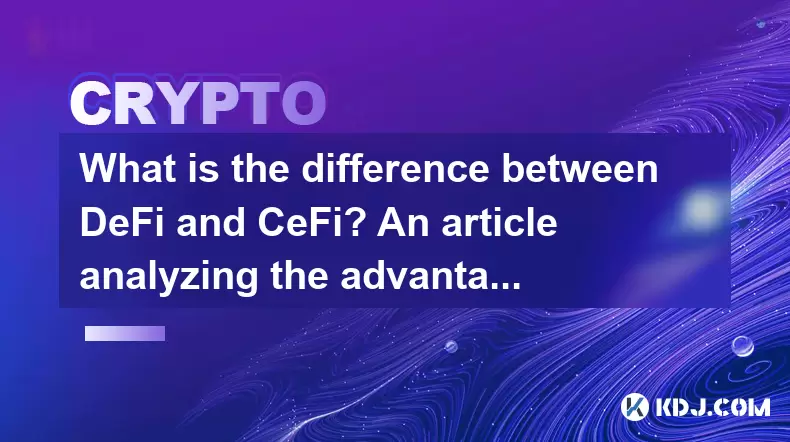
What is the difference between DeFi and CeFi? An article analyzing the advantages and disadvantages of both
Jun 13,2025 at 03:57am
Understanding the Foundations of DeFi and CeFiTo fully grasp the difference between DeFi (Decentralized Finance) and CeFi (Centralized Finance), it’s ...
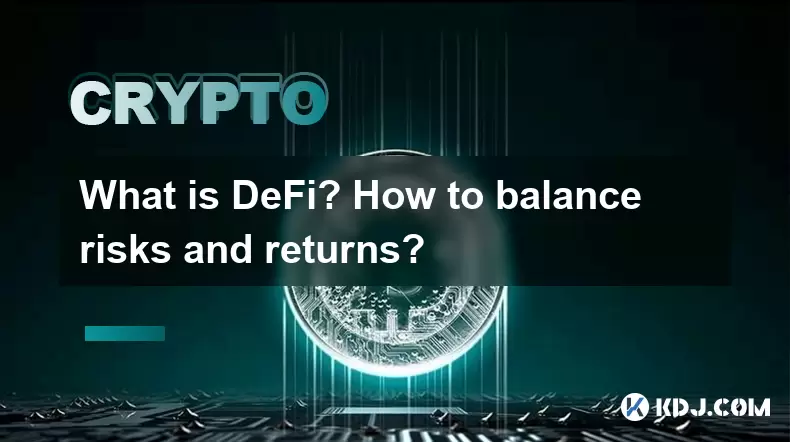
What is DeFi? How to balance risks and returns?
May 31,2025 at 12:22pm
What is DeFi? How to Balance Risks and Returns? Decentralized Finance, commonly known as DeFi, represents a revolutionary shift in the financial ecosy...
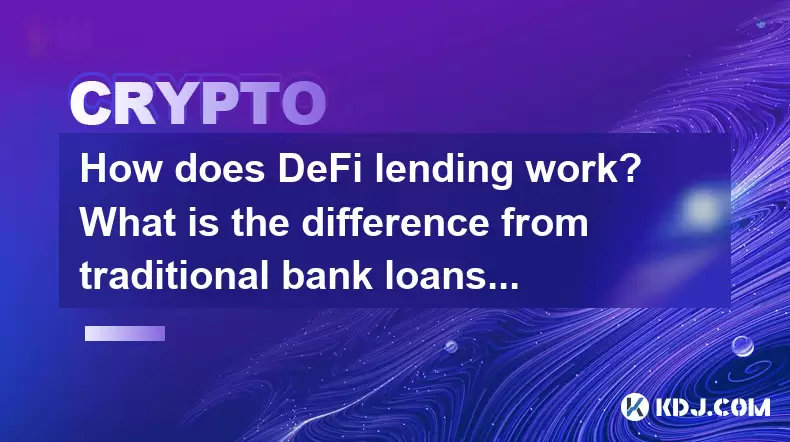
How does DeFi lending work? What is the difference from traditional bank loans?
May 29,2025 at 05:36pm
Introduction to DeFi LendingDeFi lending, or decentralized finance lending, represents a revolutionary shift in the way borrowing and lending are cond...
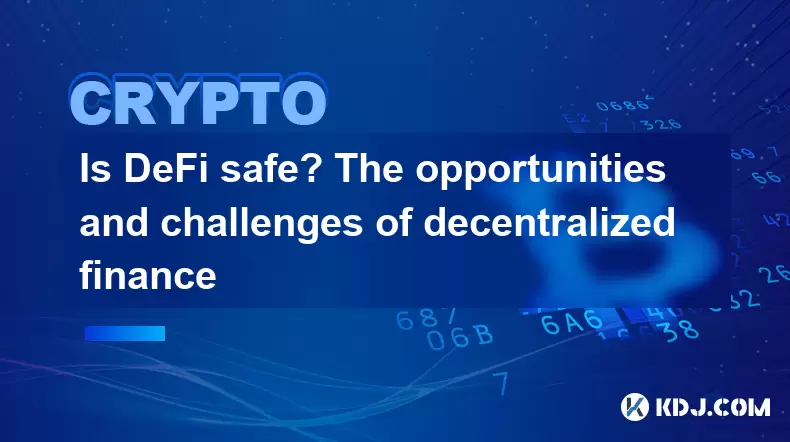
Is DeFi safe? The opportunities and challenges of decentralized finance
May 27,2025 at 02:28pm
Decentralized Finance, commonly known as DeFi, has revolutionized the financial landscape by offering a range of financial services without the need f...

DeFi Mining Tutorial: How to Maximize Profits and Reduce Risks?
May 27,2025 at 07:42am
DeFi, or Decentralized Finance, has opened up a new world of opportunities for crypto enthusiasts looking to maximize their profits through various mi...

How to track DeFi activity on a block explorer
Sep 04,2025 at 05:36pm
Bitcoin's Role in Decentralized Finance1. Bitcoin remains the cornerstone of the cryptocurrency ecosystem, serving as both a store of value and a benc...

What is the difference between DeFi and CeFi? An article analyzing the advantages and disadvantages of both
Jun 13,2025 at 03:57am
Understanding the Foundations of DeFi and CeFiTo fully grasp the difference between DeFi (Decentralized Finance) and CeFi (Centralized Finance), it’s ...

What is DeFi? How to balance risks and returns?
May 31,2025 at 12:22pm
What is DeFi? How to Balance Risks and Returns? Decentralized Finance, commonly known as DeFi, represents a revolutionary shift in the financial ecosy...

How does DeFi lending work? What is the difference from traditional bank loans?
May 29,2025 at 05:36pm
Introduction to DeFi LendingDeFi lending, or decentralized finance lending, represents a revolutionary shift in the way borrowing and lending are cond...

Is DeFi safe? The opportunities and challenges of decentralized finance
May 27,2025 at 02:28pm
Decentralized Finance, commonly known as DeFi, has revolutionized the financial landscape by offering a range of financial services without the need f...

DeFi Mining Tutorial: How to Maximize Profits and Reduce Risks?
May 27,2025 at 07:42am
DeFi, or Decentralized Finance, has opened up a new world of opportunities for crypto enthusiasts looking to maximize their profits through various mi...
See all articles










































































